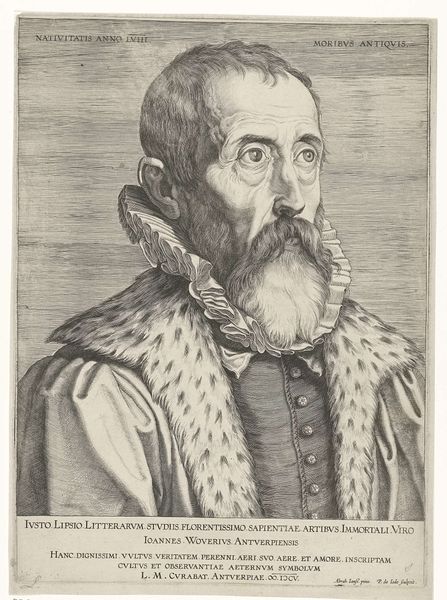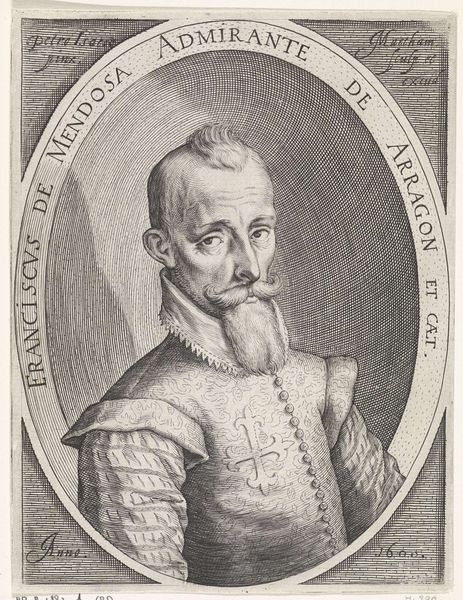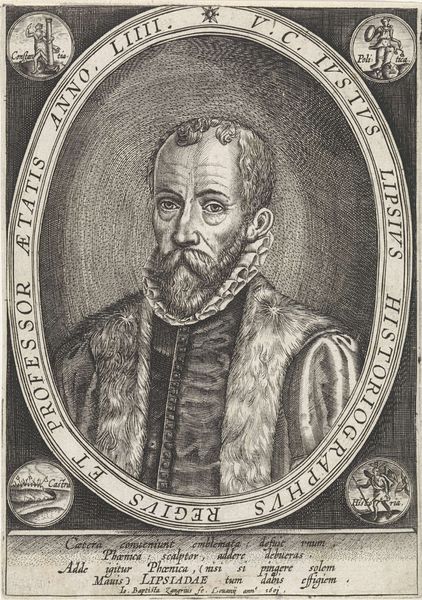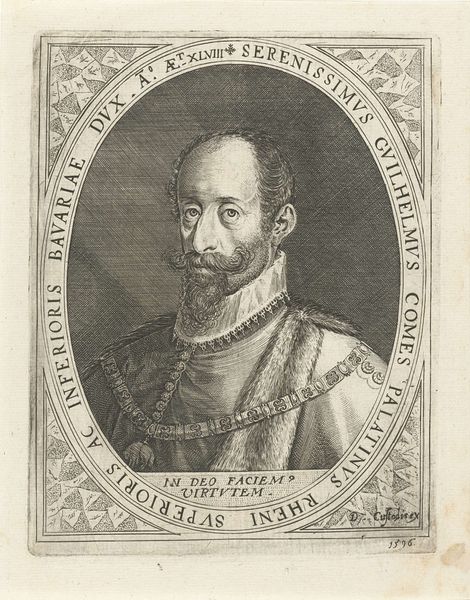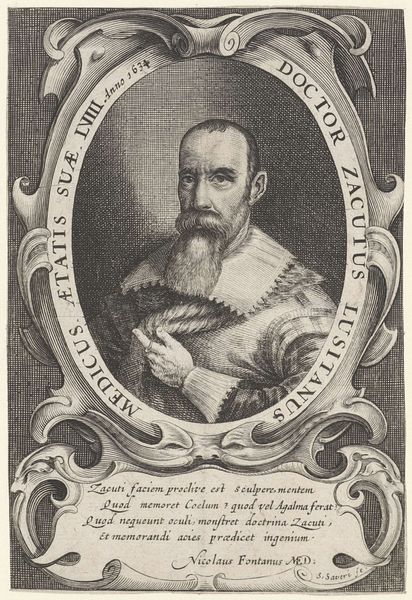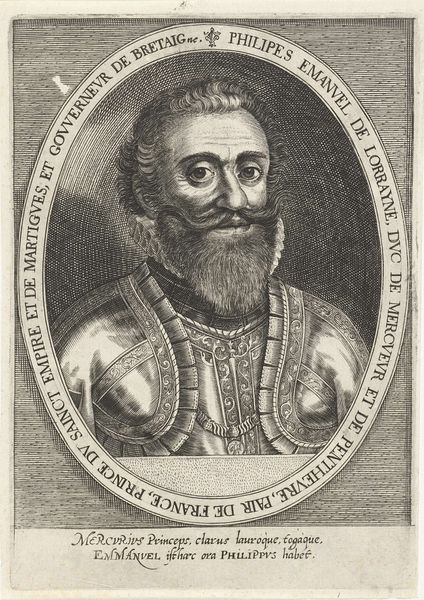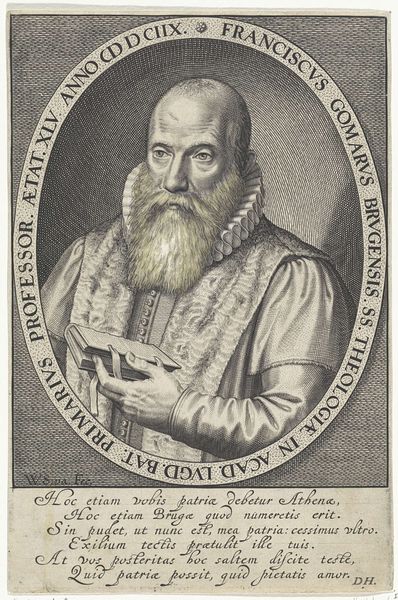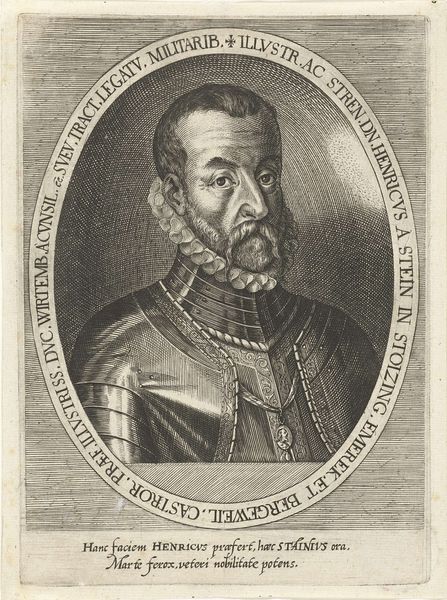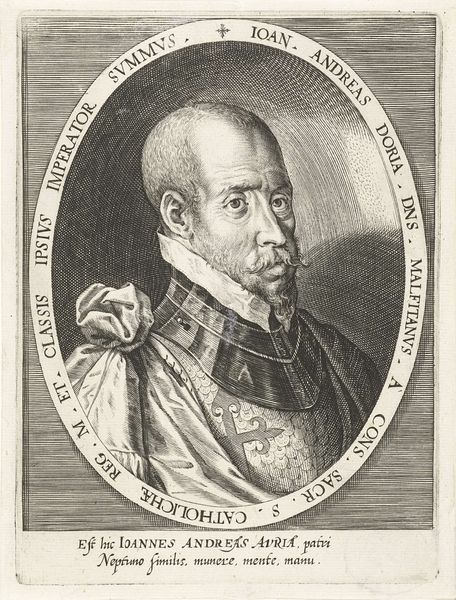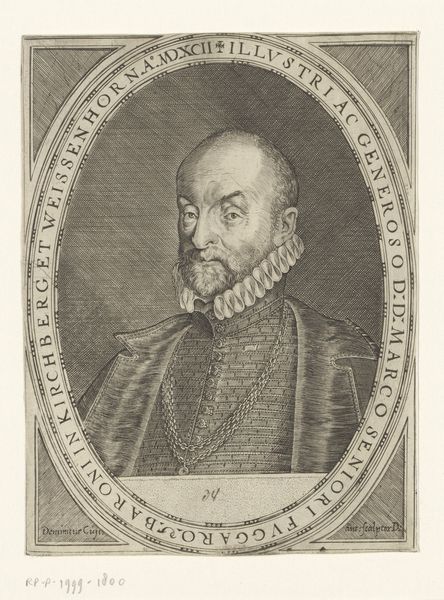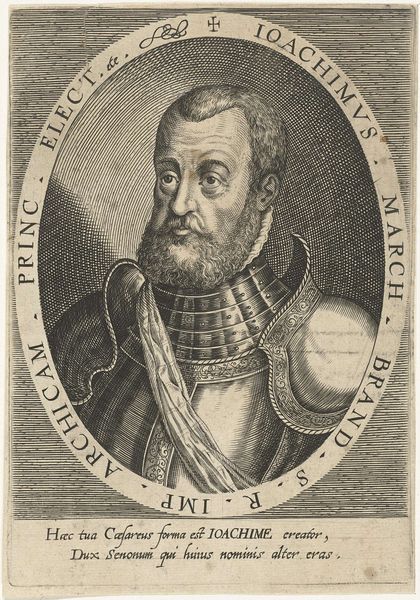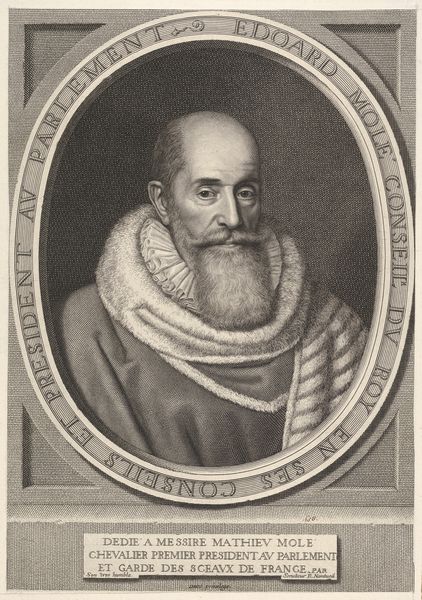
#
pencil drawn
#
aged paper
#
pencil sketch
#
old engraving style
#
personal sketchbook
#
portrait reference
#
pencil drawing
#
sketchbook drawing
#
portrait drawing
#
pencil work
Dimensions: height 177 mm, width 132 mm
Copyright: Rijks Museum: Open Domain
Editor: So, we're looking at Dominicus Custos's "Portret van Rupert baron van Eggenberg" from around 1600 to 1604. It’s an engraving, and I’m struck by the precision of the lines, the way the artist created texture. What production techniques stand out to you in this portrait? Curator: The engraving process itself is central here. Consider the labour involved: the meticulous carving into the metal plate, the controlled application of ink, and the pressure exerted by the printing press. It wasn't just about artistic skill; it was also about specialized craft and industrial networks that could produce and distribute these images. The paper is interesting too – its age, its origin. Where was it manufactured? What materials were available? These economic factors directly influenced what kind of portrait could be produced. Editor: That's fascinating. So, it's not just about *who* is depicted, but how the material conditions of the time shaped the image itself? Does the choice of materials also convey meaning in terms of social status? Curator: Absolutely! The affordability of paper, the accessibility of skilled engravers – these dictated who had their likeness immortalized and disseminated through prints. Furthermore, think about the role of this portrait in relation to others like it. Was this print a one-off commission or was it mass-produced for wider distribution, contributing to Eggenberg's fame? Editor: So we have the material, the process and its contribution to the rise of Eggenberg’s persona. It is all interconnected. Thank you, I learned a lot from seeing this print from the viewpoint of its construction. Curator: My pleasure. Paying close attention to the means of production, rather than solely focusing on artistic genius or iconographic analysis, allows a new comprehension of early modern art, one with economic realities at the forefront.
Comments
No comments
Be the first to comment and join the conversation on the ultimate creative platform.
